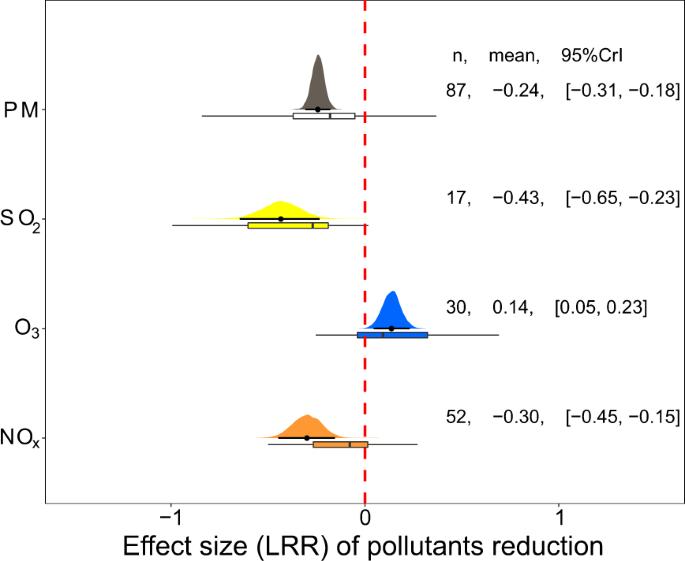Role of urban vegetation in air phytoremediation: differences between scientific research and environmental management perspectives
IF 8.8
Q1 ENVIRONMENTAL STUDIES
引用次数: 0
Abstract
Air pollutant removal by urban vegetation is perceived to be a key ecosystem service for mitigating air pollution. However, the effectiveness of air phytoremediation in cities requires more synthesis to inform environmental management. A Bayesian meta-analysis approach was used to quantify the effectiveness of the removal of typical air pollutants—particle matter (PM), nitrogen oxide (NOx), sulfur dioxide (SO2) and ozone (O3)—by synthesizing global field measurement studies. The results revealed that urban vegetation can mitigate the growth of air pollutant concentrations, with reduction rates of 16.5~26.7% for PM, 13.9~36.2% for NOx, and 20.5~47.8% for SO2. However, they failed to significantly mitigate ground-level O3, corresponding to an increase of 5.1~25.9%. The variability in effect sizes was mainly influenced by the distance to nearest highway, ambient concentration, relative humidity, and green coverage. A questionnaire survey conducted in Shenzhen city (China) showed that most environmental managers supposed positive impacts of urban vegetation on all four air pollutants, which was at odds with our findings with respect to O3. This study can inform the lessening of discrepancies between scientific research and environmental managers’ perceptions on how to improve air phytoremediation for urban air pollution mitigation in China and elsewhere.

城市植被在大气植物修复中的作用:科学研究与环境管理视角的差异
城市植被清除空气污染物被认为是减轻空气污染的一项关键生态系统服务。然而,需要对城市空气植物修复的有效性进行更多综合分析,以便为环境管理提供信息。本研究采用贝叶斯荟萃分析方法,通过综合全球实地测量研究,量化了典型空气污染物--颗粒物质(PM)、氮氧化物(NOx)、二氧化硫(SO2)和臭氧(O3)--的去除效果。研究结果表明,城市植被可以减缓空气污染物浓度的增长,可吸入颗粒物的降低率为 16.5%~26.7%,氮氧化物的降低率为 13.9%~36.2%,二氧化硫的降低率为 20.5%~47.8%。然而,它们未能显著缓解地面臭氧浓度,相应地增加了 5.1%至 25.9%。效果大小的差异主要受距离最近高速公路的距离、环境浓度、相对湿度和绿化覆盖率的影响。在中国深圳市进行的一项问卷调查显示,大多数环境管理者认为城市植被对四种空气污染物都有积极影响,这与我们对臭氧的研究结果不一致。这项研究可以帮助减少科学研究与环境管理者认知之间的差异,从而改进空气植物修复技术,缓解中国和其他地区的城市空气污染。
本文章由计算机程序翻译,如有差异,请以英文原文为准。
求助全文
约1分钟内获得全文
求助全文

 求助内容:
求助内容: 应助结果提醒方式:
应助结果提醒方式:


